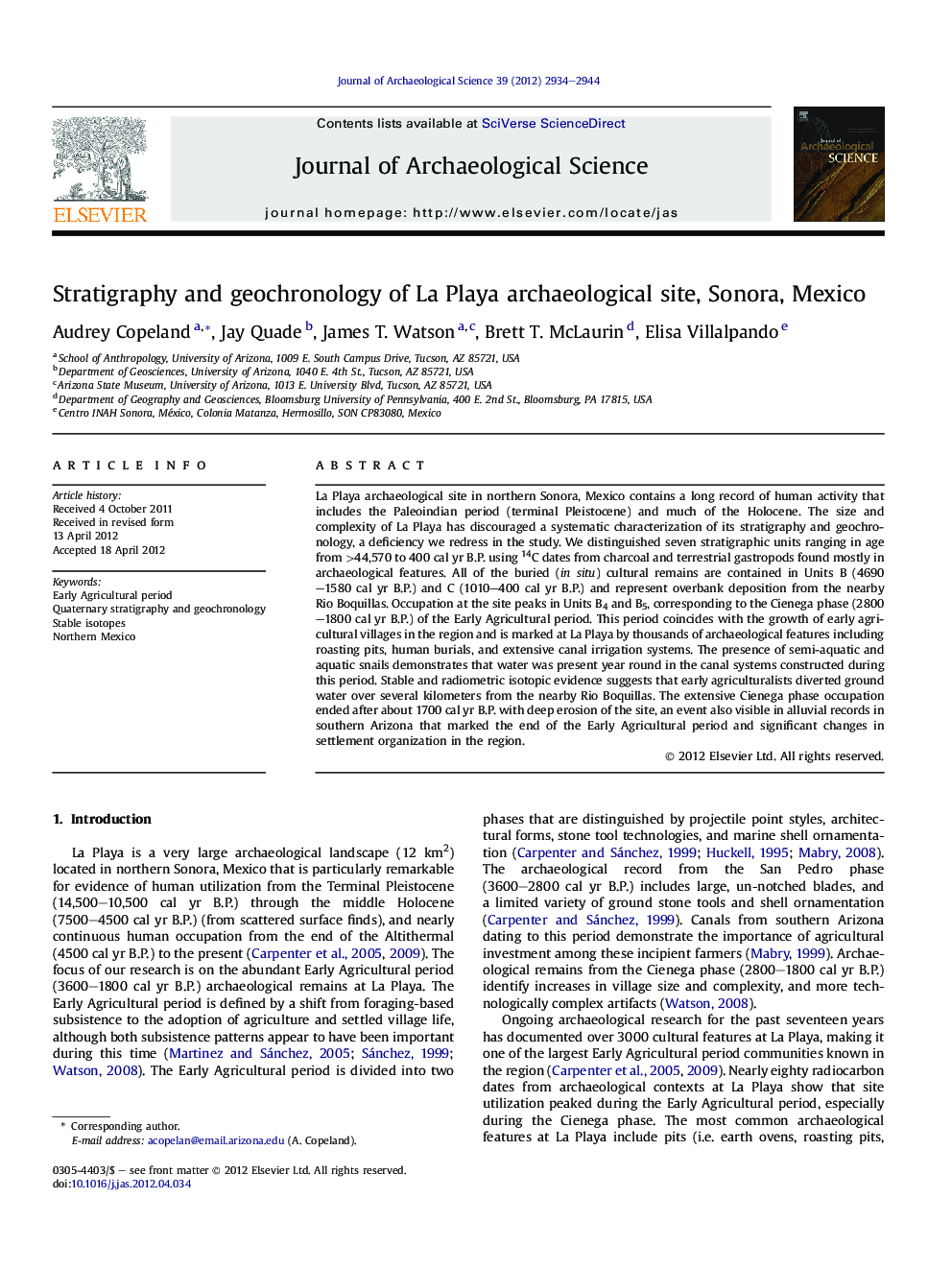| Article ID | Journal | Published Year | Pages | File Type |
|---|---|---|---|---|
| 1035796 | Journal of Archaeological Science | 2012 | 11 Pages |
La Playa archaeological site in northern Sonora, Mexico contains a long record of human activity that includes the Paleoindian period (terminal Pleistocene) and much of the Holocene. The size and complexity of La Playa has discouraged a systematic characterization of its stratigraphy and geochronology, a deficiency we redress in the study. We distinguished seven stratigraphic units ranging in age from >44,570 to 400 cal yr B.P. using 14C dates from charcoal and terrestrial gastropods found mostly in archaeological features. All of the buried (in situ) cultural remains are contained in Units B (4690–1580 cal yr B.P.) and C (1010–400 cal yr B.P.) and represent overbank deposition from the nearby Rio Boquillas. Occupation at the site peaks in Units B4 and B5, corresponding to the Cienega phase (2800–1800 cal yr B.P.) of the Early Agricultural period. This period coincides with the growth of early agricultural villages in the region and is marked at La Playa by thousands of archaeological features including roasting pits, human burials, and extensive canal irrigation systems. The presence of semi-aquatic and aquatic snails demonstrates that water was present year round in the canal systems constructed during this period. Stable and radiometric isotopic evidence suggests that early agriculturalists diverted ground water over several kilometers from the nearby Rio Boquillas. The extensive Cienega phase occupation ended after about 1700 cal yr B.P. with deep erosion of the site, an event also visible in alluvial records in southern Arizona that marked the end of the Early Agricultural period and significant changes in settlement organization in the region.
► We examined the stratigraphy, geochronology, and paleoecology of the La Playa site. ► We identified seven stratigraphic units ranging in age from >44,570 to 400 cal yr B.P. ► Most cultural remains (roasting pits, burials, canals) date between 2800 and 1800 B.P. ► Isotopic evidence suggests that canals carried water over several kilometers. ► Erosion and population decline after 1600 cal yr B.P. match records from southern Arizona.
